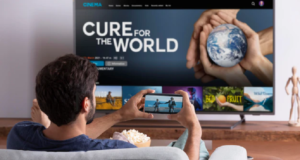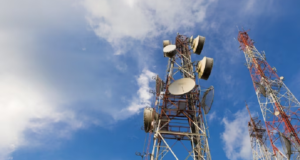The Lipstick Lesbian Flag: A Colorful Symbol of Feminine Queer Pride
The LGBTQ+ community is no stranger to flags as symbols of identity, pride and visibility. The iconic rainbow flag has become a universal symbol of queer liberation across the globe. But within the diverse LGBTQ+ community, numerous other flags have emerged to represent more specific identities and subcultures. One such example is the lipstick lesbian flag.
With its distinctive design featuring a kiss mark and bold splash of pink,
this cultural symbol has come to embody feminine gender expression and womanhood within lesbian and queer spaces.
A Brief Background on Lipstick Lesbian Flag
Before delving into the itself, it is helpful to understand the history and
purpose of pride flags more broadly. Pride flags grew out of the LGBTQ+ rights movement as colorful emblems to increase visibility and foster community.
The first pride flag was designed by artist Gilbert Baker in 1978 at the request of Harvey Milk, one of America’s first openly gay elected officials. Baker’s original flag featured eight colored stripes, each carrying a unique meaning – like red for life, orange for healing and pink for sex.
Over the ensuing decades, Baker’s rainbow flag became ubiquitous as a sign of LGBTQ+ unity and solidarity. But many other flags emerged within specific niches of the community, like the transgender pride flag created by Monica Helms in 1999. These flags allow for greater nuance in identity and give visibility to subgroups that feel their distinct culture or needs get overshadowed by the broader community. The is one such example that has gained cultural significance.
Origins of the Lipstick Lesbian Flag in 2010
The flag was created in 2010 by blogger Natalie McCray, founder of the website This Lesbian Life. McCray designed the flag to represent lipstick lesbians – feminine-presenting queer women who may enjoy wearing make-up, dresses and
other conventionally “girly” styles while also embracing their lesbian identity.
The term “lipstick lesbian” had existed for years as slang describing this identity, but it lacked a clear cultural symbol. McCray’s design featured a white stripe on top representing “women,”
A bright pink stripe on the bottom signifying “femininity,” and a red kiss mark in the upper left corner “for all the lipstick lesbians out there.” She debuted the flag on her site in 2010 and it quickly gained attention.
Unlike the pink lesbian pride flag that also emerged around 2010,
McCray’s design specifically celebrated feminine gender expression tied to female identity. The bold yet soft visual aesthetic matched the duality of the lipstick lesbian identity – embracing femininity while proudly loving women.
Spreading Through Online Communities
In the early 2010s the flag rapidly spread through Tumblr, Instagram, Etsy and various online shops, gaining popularity especially among younger internet-savvy queer women.
The flag provided a renewed source of community and pride for feminine-presenting lesbians who didn’t fully identify with the butch aesthetic often associated with lesbians.
Copywriter Emily Gref noted that the flag fulfilled a need for “a broader range of representations of what it can look like to be a queer woman.”
Feminine-presenting women could hang the flag in their rooms or feature it on social media to subtly signal their identity to others. The flag grew through grassroots support rather than any centralized promoter or campaign.
Cultural Significance and Representation
The lipstick lesbian flag carries layers of cultural meaning about visibility, femininity and inclusion within the broader LGBTQ+ community. For many lesbian, bisexual and queer women who gravitate to traditionally feminine styles of self-expression,
the flag empowers them to embrace their womanhood and sexuality without having to reject feminine beauty standards.
As McCray explained, “Feminine lesbians have often been invisible in LGBT culture, young women especially, and this is their way of saying that they’re finally here.” The bold pink stripe visually proclaims that being conventionally “girly” does not preclude queer identity. Flying the flag represents feminine lesbian sexuality on its own terms.
The lipstick lesbian flag has also provided greater representation within LGBTQ+ spaces that have traditionally tilt toward masculine imagery and expression. It celebrates femme identity and beauty as equally worthy of pride and visibility.
However, this has led to some criticism that the flag perpetuates narrow representations of lesbian identity or idealized forms of feminine beauty.
Featuring on Apparel and Accessories of Lipstick Lesbian Flag
By the mid-2010s the flag motif had made its away onto T-shirts, hats, pins, jewelry and many other items of apparel and merchandise targeting feminine queer women. Etsy emerged as a popular hub to purchase lipstick lesbian accessories.
The flag appeared on phone cases, shirts with slogans like “Lipstick Lesbian Pride,” and lockers, allowing women to subtly signal their identity through style and accessories.
The flag has also been incorporated into various multi-flag designs, showing solidarity across identities. For example, variants might combine the lipstick lesbian stripes with those of the transgender pride flag or create hybrid flags with bi pride colors. The lipstick lesbian pride aesthetic lends itself well to apparel and merchandising and has become a successful niche industry.
Alternative Color Schemes and Interpretations
Like other pride flags, the flag has spawned many derivative versions with altered color schemes and patterns, expanding its creative interpretation. Some alternatives replace the bright pink with shades of purple, black or blue. The original kiss mark gets swapped out for different lipstick kisses or lip imagery.
Not all variants use the term “lipstick lesbian” in describing the flag’s meaning. Some see it as a broader sapphic, queer female or WLW (women loving women) symbol not confined strictly to feminine lesbians. There are also modified flags representing different types of sapphic identities, like stem lesbian flags featuring math symbols. Adaptations of the lipstick lesbian flag illustrate how the meanings of cultural symbols can evolve.
Representation in Media and Marketing
While originating in online communities, the lipstick lesbian flag has breached into mainstream media, marketing and commentary in recent years. In 2020, SNL did a skit about lesbian flags that poked fun at the flag’s specificity. Miley Cyrus provocatively posed with the lipstick lesbian flag for Pride month in 2021, drawing both praise and criticism.
The flag is increasingly used in TV shows and movies to signal a character’s queer feminine identity through set decoration and costuming. It has also been leveraged for branding by companies seeking to tap into the “femme economy.” However, some view the flag’s commercialization with skepticism, believing it undercuts the symbol’s radical queer roots.
Critical Perspectives and Controversies
The lipstick lesbian flag embodies some of the evolving tensions and debates within the LGBTQ+ community surrounding identity, privilege and inclusion. Some critics argue that in elevating traditionally feminine appearance and beauty norms, the flag excludes those who do not or cannot conform to those standards, like butch, androgynous or transgender individuals.
This critique parallels debates about how concepts like womankind, sisterhood and feminine divinity apply to queer, non-binary and transgender identities. The importance of feminine self-expression for those who connect with those norms collides with the need for expansive representation.
There are also concerns that the “lipstick lesbian” concept overly sexualizes feminine queer women, playing into stereotypes for marketing or male gaze. The imagery and terminology invoke critiques about reinforcing an idealized “heteronormative” appearance versus liberation. As with any identity symbol, the meaning behind the lipstick lesbian flag depends heavily on perspective and context.
Looking to the Future of Lipstick Lesbian Flag
The lipstick lesbian flag is a testament to how niche identities emerge and become embedded into cultural symbology, bringing empowerment but also contention. In just over a decade, it has catapulted from an online meme to a potent symbol of feminine lesbian visibility, while also raising issues of inclusion and commercialization.
As pride flags and queer identities continue proliferating, it remains to be seen whether the lipstick lesbian flag will maintain its specific resonance or become absorbed into a broader umbrella of sapphic culture. But its rise illustrates the power and politics of visibility embedded in even the simplest graphic representations. The colorful stripes convey far more than meets the eye.
Certainly! Here are some FAQs related to the lipstick lesbian flag:
What does the lipstick lesbian flag represent?
The lipstick lesbian flag is a symbol of pride and visibility within the lesbian community, particularly for feminine-presenting lesbians.
Who designed the lipstick lesbian flag?
The lipstick lesbian flag was designed by Natalie McCray in 2010 to represent feminine lesbians who often feel marginalized within the LGBTQ+ community.
What do the colors of the lipstick lesbian flag signify?
The colors of the lipstick lesbian flag hold specific meanings: pink represents femininity, red stands for love and passion, and the white stripe represents gender inclusivity.
Where can I find the lipstick lesbian flag?
The lipstick lesbian flag is widely recognized and used in LGBTQ+ communities worldwide. It can be found in various pride events, online stores, and LGBTQ+ organizations.
How can I show support for the lipstick lesbian community?
Showing support for the lipstick lesbian community can be as simple as recognizing and respecting their identity, amplifying their voices, and advocating for inclusivity and acceptance within society.
Reference Links:
http://www.linkedin.com/pulse/unlock-your-scrum-psm-i-certification-success-official-6ztse/
http://www.linkedin.com/pulse/palo-alto-networks-pcnsa-dumps-ace-your-certified-network-rpwxe/
http://www.linkedin.com/pulse/splunk-splk-1003-exam-questions-2024-conquer-enterprise-yjyse/
http://www.linkedin.com/pulse/splunk-splk-1002-exam-questions-2024-conquer-enterprise-pwsve/
http://www.linkedin.com/pulse/unlock-your-microsoft-pl-900-certification-official-9chhe/
 Living There
Living There




